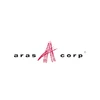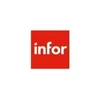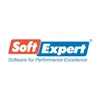Product Life Cycle in Marketing: Stages & Examples of PLC Model

Product Life Cycle – a term you must have heard or studied before but are still unsure what it means and how it applies to a product or a service.
Many business owners and marketing professionals have their own understanding of how a Product Life Cycle works, but somehow, they still fail to consider it while strategizing.
However, you cannot use the same marketing strategy for a new product that you are about to launch and the product that has been there in the market for years now. It is important to devise unique marketing strategies for every stage of the product lifecycle.
So, here in this article today, we will be understanding the product life cycle, its various stages, and what marketing strategies should be used in every stage with some real-life examples.
What Is Product Life Cycle in Marketing?
Product Life Cycle is the journey of a product from its launch to its end of life or disappears from the market. This product life cycle has five stages:
- Development
- Introduction
- Growth
- Maturity
- Decline
The marketing team aligns its efforts and strategies to highlight the changing characteristics of the product in each stage. Looking at the product life cycle through a marketing perspective helps identify how and what should be communicated at each stage.
5 Stages of Product Life Cycle with Examples
Let’s begin to understand the five stages of product life cycle, and what marketing strategies a business should adopt to survive and transition from one stage to another.

- Development: This is the very first and the most sensitive stage in the product’s life cycle. It includes everything from ideation to research, product development, lab tests to designing the final product. In this stage, you need to evaluate everything related to your product, its consumers, market scope, competitors, etc.
In this stage, you cannot expect any sales, but your marketing can create some buzz through social media networks, billboards, and more. Such strategies can help generate curiosity and encourage consumer engagement.
For example, if you are planning to launch a soap, in the development stage you need to focus on market research to identify your competitors, consumer expectations, market gap that your product can fill, etc.
So, now when your product is ready to be launched you can transition to the next stage of product life cycle.
- Introduction: This is the stage when your product is launched for the first time on the market. In this stage, marketers need to focus on creating maximum awareness about the product, introduce it to potential buyers, and convince them to at least consider the product while buying.
The aim of marketing at this stage is to build enough awareness that consumers should at least recognize the product.
The marketing campaign in the previous development stage has helped you in identifying consumer expectations. Now you have designed your product, keeping in mind people’s expectations. The advertisements will tell what this new soap offers, the various problems it solves, and how it is different from others in the market.
- Growth: In this period your communication is designed to target your competitor’s market. You want to acquire their customers and become a more “preferred” brand. The marketing campaign at this stage needs to focus on maximizing market share.
Here the marketing campaign will utilize the user experience to market the soap. You’ll need deeper consumer and competitor analysis to establish that your product is best in the market, and those who are using your competitor’s product should switch to yours.
- Maturity: This stage represents the highest level of product adoption and profitability. In this stage, your new customers are the ones who have switched from your competitors. Marketing efforts in this stage need to be focused on maximizing profit while defending the market share.
There may be more competitors entering the market with new features, so you need to work towards creating brand loyalty and recognition.
Marketing communication should focus on sustaining the brand by establishing brand identity. In this stage, the brand should become bigger than the product itself.
Your advertisements should also be directed towards introducing a new and advanced version of the soap with new packaging and design to give a new and improved look and feel.
- Decline: In this stage, the sales and profits start to shrink. In this stage there is not much scope for marketing, you should focus on reducing the spending and focus on milking the brand that you have created.
After a stage, you need to decide to harvest the product or withdraw the product from the market. You can utilize the loyalty that already exists and then after a point decide to withdraw the product. If you don’t take this decision on time, you might waste your valuable resources and efforts.
How Does Product Lifecycle Work?
Like people, products too have life cycles. It begins with an idea and then eventually manifests into a product which is then strategically launched in the market. When a product is launched, its demand increases, thus, increasing its popularity.
This results in newer products pushing the older ones out of the market, and they reach the later stages of product lifecycle i.e., maturity and eventually decline. This happens because the cost of production increases and the demand of the product decreases because of which the sales decreases.
At this stage, the business needs to take the smart decision of reinventing the product or withdrawing the product from the market to save its resources.
How to Use the Product Life Cycle Model in Marketing?
Now to understand how this product life cycle works in marketing, we’ll go through a case study that many of us have been a part of.
Nestle – Maggi Product Life Cycle Case Study
Introductory Stage in the Product Life Cycle of Maggi: When Maggi entered the Indian market in 1982, it did spend a lot on aggressive marketing. The instant noodle market was an unexplored area, so the positioning was not difficult because there were no competitors.
It segmented itself based on age and urban area while targeting kids, youth, and office goers who were looking for something healthy and instant. They branded it with the tagline, ‘Taste Bhi, Health Bhi’ and a 2-minute noodle.
The marketing at this stage was focused on creating product awareness along with doing several product modifications as per the Indian taste. With lots of ups and downs, Maggi survived the introductory stage with targeted marketing.
Growth Stage in the Product Life Cycle of Maggi: Around 1985, consumers started to accept Maggi and the sales increased. Until 1990, Maggi was still a monopoly after which Top Ramen entered the market which did affect Maggi’s market share by little.
To increase its market share, Maggi launched a new flavor in 1997, but it was not accepted warmly by the Indian audience. In 1999 it re-launched its original flavor, and it was back in the game with increased sales and profits.
During this period, they marketed new product variations under the brand like ketchup, pasta, soup, oats but never shifted their focus from the original product.
Maturity Stage in the Product Life Cycle of Maggi: During this stage, when the sales and profits were soaring high, Maggi faced neck-to-neck competition with Top Ramen. To capture a larger segment of the market, it played on the pricing strategy by introducing a 5 rupees packet of Maggi which increased the distribution.
It helped in taking over the competitor’s market and acquiring the maximum market share. This strategy helped Maggi reach every household irrespective of any demographic.
Decline Stage in the Product Life Cycle of Maggi: In 2015, due to high lead content, Maggi was banned, and everyone’s favorite noodle was taken off the shelf and it was believed that Maggi has entered the decline stage.
But Maggi bounced back. With effective PR and marketing, Maggi proved itself to be safe for human consumption and brought itself back by branding it as safe for consumption.
It invested in research, internal employee engagement, social media campaigns, and exclusively re-launched itself with Snapdeal.
Before returning locally, Maggi offered its loyal customers to pre-order from Snapdeal, and in no time the demand increased. Maggi branded itself as ‘Your Maggi is safe, has always been’ and thus, escaped death.
What are the Best Product Lifecycle Marketing Strategies?

Based on your product and its USPs, different strategies can be adopted in different stages of product lifecycle. Let’s discuss what different strategies you can choose at each stage:
Marketing Strategies in Introductory Stage: While aiming to create product awareness and establishing a product identity, your marketing strategies should focus on reaching out to the right customers. The following approach can be adopted:
- Rapid Skimming, launching a product at high price with aggressive promotions
- Slow Skimming, launching a product at high price with slow promotions
- Rapid Penetration, launching a product at low price with aggressive promotions
- Slow Penetration, launching a product at low price with slow promotions
In this stage, you can often play with pricing and positioning strategies to create demand.
Marketing Strategies in Growth Stage: The strategies in this stage focus on increasing profits and expanding the market. The following marketing strategies can be used here:
- Upgrading the product with new features
- Expanding in new market segments
- Strategically pricing the product, low or high
- Increasing distribution channels
- Shifting marketing communication from product features to customer preference
Marketing Strategies in Maturity Stage: In this stage, you enjoy increased sales, and the marketing strategies are all about retaining the brand. The following marketing strategies can be used here:
- Acquiring competitor’s users
- Converting non-users into customers
- Launching an advanced version of the product
- Making the brand more valuable than products
- Enter new market segments
Marketing Strategies in Decline Stage: This is the stage when you should know when to stop or withdraw from the market to save your resources. The following marketing strategies can be used here:
- Reduce marketing expenditure
- Reduce distribution channels
- Lower prices to increase sales
- Reinvent the product
- Harvest the product before discontinuing it
To Conclude
The basic product life cycle applies to all products and services. The right marketing strategies in each stage can help you derive maximum profits and sales and position your product.
These strategies can help you in stretching a particular phase in the product life cycle, and survive for several years in the maturity stage.
A product’s demand is destined to decline, but by adopting technology and changing trends, you can reinvent and repurpose your product to survive in the market.
FAQs
What are the stages of customer lifecycle?
Five stages of customer lifecycle are Discovery, Education, Purchase, Post-Purchase Engagement and Advocacy.
What are the best product life cycle marketing strategies?
The best product life cycle marketing strategies can be rapid or slow skimming and penetration, where you can strategically price the product to create demand.
What is customer lifecycle marketing?
Customer lifecycle marketing is a process to create communication strategy to support prospects and customers in their buyer journey.
Why is product life cycle important in marketing?
Various stages in a product life cycle require different marketing strategies to achieve the desired objectives. For example, in the introductory stage, product awareness is required, and in the maturity stage, brand loyalty is required.
What is the main objective of product life cycle management?
The main objective of product life cycle management is to identify potential sales opportunities in each stage and establish brand identity and loyalty.
What are the types of product life cycle?
The types of product life cycle are development, introduction, growth, maturity and decline.
Related Categories: Engineering Design Software | PLM Software | BIM Software | Simulation Software | Electrical Design Software
Isha’s writing journey started way back in 2018 when she graduated in the field of Journalism & Mass Communication. Since then, she has been writing for all digital and print marketing assets including blogs, editorial reviews, landing pages, emailers, and more. She has contributed her writings to genres... Read more
























